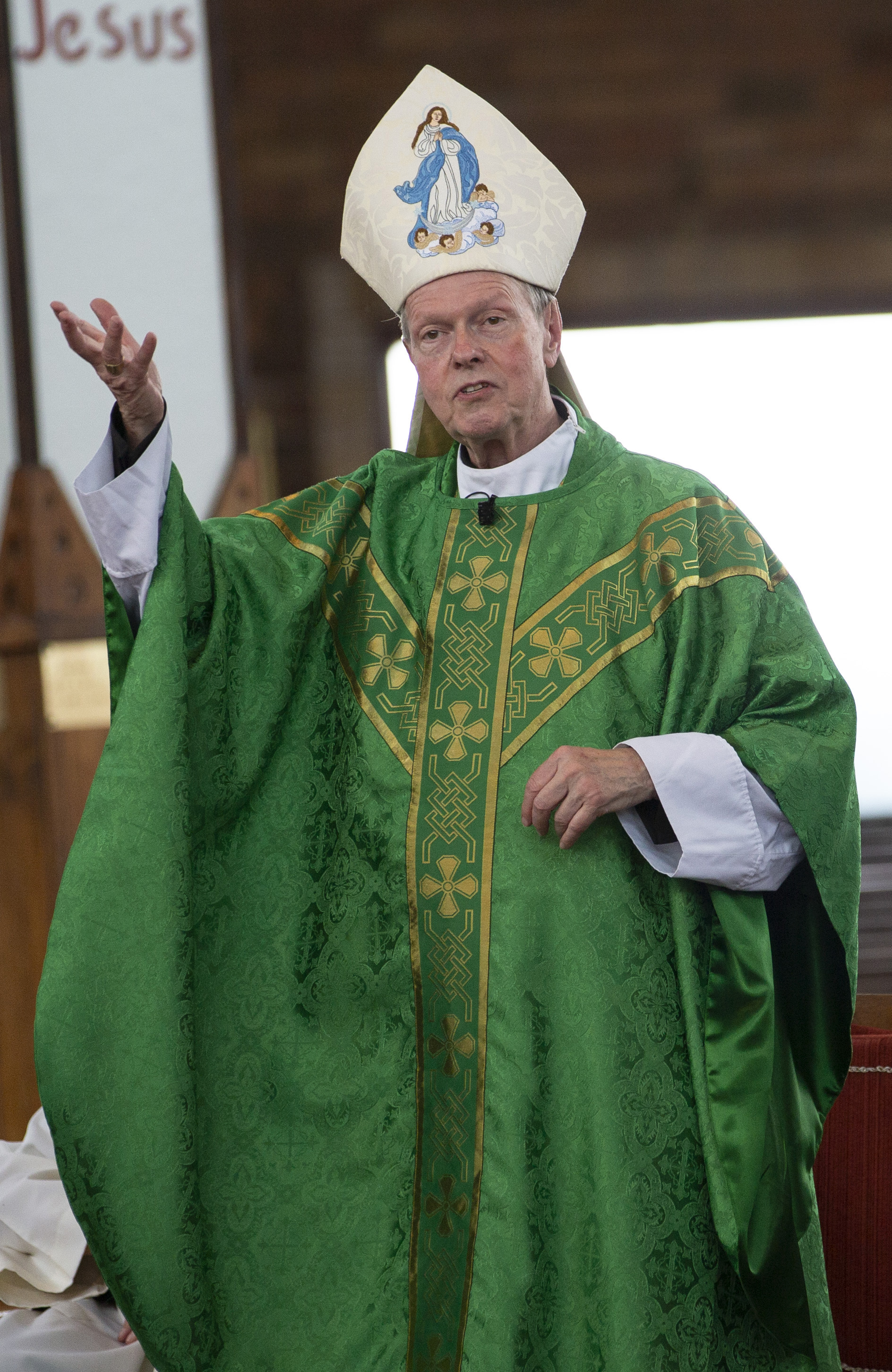December 6, 2022 at 5:54 p.m.
Some of my own thoughts, I am sure, have been suggested or inspired by the reflections of theologians and others who have reflected on this mystery. Maybe I have picked up on them. We all know that Baptism is the Sacrament that releases us from Original Sin, which is the term used to describe the state into which all human beings are conceived, that is, a certain natural disability by which our relationship with God is somehow compromised and twisted by a heredity of sin. We have a tendency to see good things in a partial or distorted light, a lack of integrity which leads us to misuse or abuse them. Theologians call this concupiscence. It is what turns love into lust, hunger into gluttony and desire into greed. Baptism not only restores our original relationship with God, prior to the fall of man, but also infuses us with the grace to be able to overcome the temptations that lead us away from God’s Jesus who, unlike us, lived a life of total love, purity and holiness. So why did he need to be baptized?
John the Baptist gives us part of the answer when he says that he baptizes with water, but the one who comes after him (Jesus) will baptize “with the Holy Spirit and fire.” Water, among other things, is a cleansing agent. John was preaching a baptism of repentance, asking people to leave their sins behind them and to immerse themselves in the Jordan River as a sign of their willingness to turn away from sin. Basically, what this means is to make an attitude adjustment: admit their sinfulness, repent of it and turn toward the one who can free them from it. The baptism of John could not actually take away sin and bring down the life of the HOLY Spirit, the sanctifying agent of God’s grace. Only Jesus could. The way Jesus would do this is also symbolized by another meaning of water: death and drowning. Jesus would immerse himself into death and, in so doing, allowed all the sins of the world to be crucified and all repentant sinners to be redeemed.
In effect, what the baptism of Jesus in the Jordan pre-figures is his baptism in blood on the Cross. He would take upon himself the punishment for sin that we deserved so that we could have the reward for holiness that he deserved. In one sense Jesus did not need to be baptized because he was always sinless but in another sense he “needed” to accept it so that he could assume our sinful condition (without sinning) to redeem it.
This is a great mystery of love, not unlike the “crucifixion” a person who forgives an offender may experience. If someone wrongs you in any way, it is you who suffers the pain of the wrongdoing. How is the wrongdoer ever to be freed from their guilt?
There is no way to undo the wrongdoing: the injury is real and lasting. The wrongdoer is helpless to reverse its effects. The only way to restore the broken relationship between the wrongdoer and the person wronged is for the victim, so to speak, to offer forgiveness. But what does this cost? In order to forgive, it is the victim who must “bite down” and resist the temptation to strike back and punish the wrongdoer. In effect, the person who is wronged must suffer twice: once for the original injury and once for the pain of absorbing the hurt without letting it result in revenge or retribution.
So Jesus allows himself to be baptized — or drowned — in the sinfulness of our human condition so that he can raise us up from it. The most remarkable thing about the life of Christ is the extent to which he lived the effects of the fallen human condition — absorbing all the hate, impurity, greed, anger and pride — so that we could be freed from them. This is love like the world had never known in such an intimate, earthy way: a holy God who would die for his sinful creatures to cleanse them from their own sins. This is love like the world has never known. And it is what is so saving about the love of Jesus Christ for each and every one of us.
The Baptism of Jesus then is his complete immersion in our human condition, our sinful, broken, fallen nature which he takes upon himself out of love and compassion for us without participating in the sins that put us in that condition. Why does he do this? I have no other way of understanding it than that he wants to meet us exactly where we are, no matter how low a state we have fallen into. It is why he accepted the abasement and humiliation of the cross, which is the sign of our degeneration. Looking at the cross we should be looking at ourselves. But instead, he puts himself on it so that instead of having to dwell on our sins and failings, we can see only him — if we are willing to accept this incredible outpouring of forgiving love.
John the Baptist understood this so well, seeing in Jesus the “Lamb of God,” the one who takes away the sins of the world. In this Advent, he invites us to shed our fears and false pretenses of control and self-satisfaction, the myth that we make ourselves and define our own identities. To know and receive the true meaning of Christmas, we need to accept and embrace the God who comes to us. This is what Advent means and the only way we will experience this Christmas as something new and life-transforming, instead of a frantic attempt to recreate memories from a past that no longer exists or shop, bake and decorate our way into a fleeting moment that vanishes with the discarded Christmas tree on Dec. 26.
John invites us to get real and take seriously that the Lord is coming to stay with us personally and seeks a permanent presence in our lives, a place in our hearts that no earthly power can take away. He is the peace that the world cannot give and all he asks is our “Amen.” In the words of Mary who accepted his Incarnation: “be it done unto me according to thy word.” The same Jesus invites us to let him be born again in our hearts.
facebook.com/AlbanyBishopEd
@AlbBishopEd
SOCIAL MEDIA
OSV NEWS
- To turn away others is to turn away God, pope says on Christmas Eve
- Arriving at the manger with Caryll Houselander
- Barrett discusses Dobbs decision, Roe’s ‘flawed’ reasoning, life at the court, her faith
- Bishop: To welcome immigrants is to follow God’s ‘divine command’ to care for the stranger
- Jesuit search, recovery of migrant remains finds bodies of 2 women in difficult desert terrain
- In pastoral on Communion norms, Bishop Martin emphasizes Eucharist is communal act of worship
- A dream of Bethlehem community: A house for the poor in village where St. Francis staged first Nativity
- Brooklyn-based book a cry from the heart about roads not taken
- In leaving CEO post, Curtis Martin says he’ll remain on board, ‘stay on mission’ with FOCUS
- Pope thanks priests, encourages them to share responsibilities with laity








Comments:
You must login to comment.